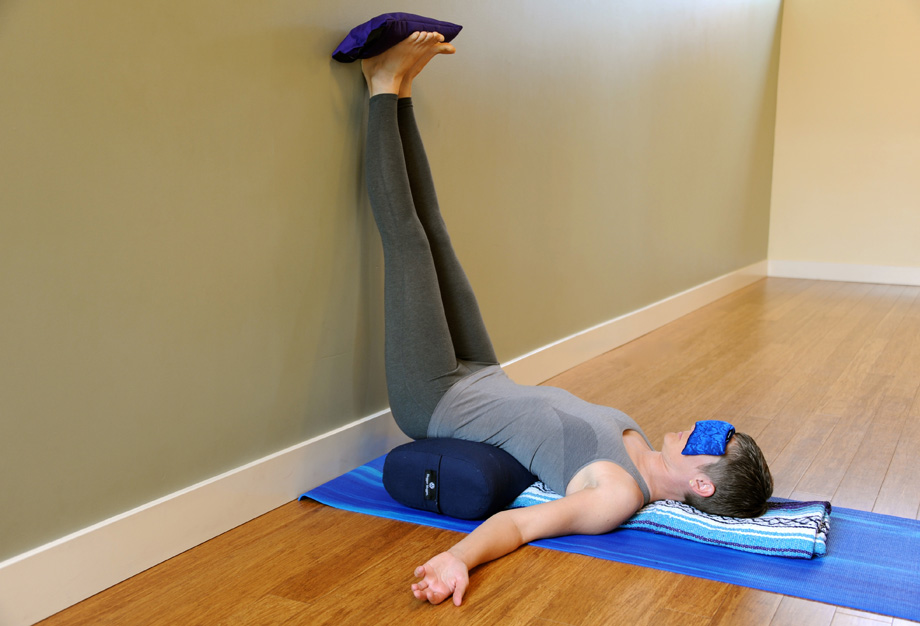
Right now, much of the world is sleeping. Creatures such as bears, marmots, bats and bees hibernate. Reptiles fall into a state of sluggishness and inactivity called “brumation.” According to Peter Wholleben, author of the book The Hidden Life of Trees, even trees fall into slumber. Letting their leaves lose their green, and then dropping them altogether, allows them to sleep away the cold, dark days.
What do we humans do? In Western cultures at least, we ramp it up. While the rest of the world goes quiet, we spend December shopping, socializing, attending holiday programs and consuming vast amounts of stimulating fare. Some of us travel to see family, a pursuit that can be either edifying or exhausting.
It’s true that holiday gatherings can be fun. It’s gratifying to give. It’s pleasing to spend time with dear ones. But at a time of year when our bodies and minds want to turn inward, the extra stimulation runs counter to our natural inclination. The unusual amount of activity can interfere with our ability to sleep deeply.
Sugar and alcohol interfere with blood sugar levels. The decibel levels at parties can jangle the nervous system. Often we stay up later than usual. All these factors can lead to low-quality sleep.
Yoga for Deep Sleep
Fortunately, we all possess the tools to slow down. First and foremost, we all breathe. Like all autonomic functions, we breathe all day long without having to tell our bodies to do it. But breathing is the only autonomic function that we can control. When we slow the breath, the rest of the nervous system follows suit. So the first tool in our toolbox of yoga for deep sleep is to simply slow down our breathing.
We can slow our heart rate intentionally through a process called “sinus arrhythmia.” When we inhale, the heart beats faster; when we exhale, the heart rate slows. So by lengthening our exhalations, we can slow the heart rate. This can potentially lower our blood pressure, and help us calm our over-stimulated nervous systems.
Another tool we have at our disposal is called the “baroreflex.” Wikipedia describes it like this: “The baroreflex provides a rapid negative feedback loop in which an elevated blood pressure reflexively causes the heart rate to decrease and also causes blood pressure to decrease.”
According to longtime yoga teacher and sleep scientist Roger Cole, we can activate the baroreflex by practicing yoga for deep sleep. Activating the baroreflex not only decreases blood pressure, but it also suppresses the sympathetic (fight-or-flight) nervous system. This can help us calm an over-stimulated body-mind, and promote deeper sleep.
One of the most poses for stimulating the baroreflex is Viparita Karani. This pose places the heart slightly above the head and puts the neck in a flexed position. This stimulates the baroreflex. That is why Viparita Karani is considered to be the “mother” of all poses in the canon of yoga for deep sleep.
Often called “Legs Up the Wall,” the pose’s Sanskrit name actually means “clear lake.” In the pose the “lake” refers to the abdomen, the entire area from the bottom of the sternum to the pubic bones. When that lake is horizontal, we can rest easily in the pose. If the lake is spilling toward the head, there will be agitation, both in the lake and in our nervous systems.
How to Practice Viparita Karani
Viparita Karani is an inversion. While it is mild, all the usual contraindications still apply. If you have unregulated high blood pressure, glaucoma, detached retina or are on your menstrual period, practice lying flat on the floor with your legs on a chair.
- Gather together a yoga bolster (or two firm blankets), and an additional blanket. As an option, if you have a yoga sandbag, eye pillow and/or strap, you can use these as well.
- Place a bolster, or a stack of a couple blankets folded in the shape of a bolster, parallel to and about 4 to 6 inches from a wall.
- Fold another blanket into a bolster size and place it perpendicular to your bolster so that it forms a “T” shape.
- Sit sideways on the end of your bolster with your right side facing the wall. Then roll onto your back, swinging your legs up the wall.
- Adjust your position so that your buttocks are off the bolster, but your sacrum is fully supported. Check to see if your “lake” is horizontal. If you feel your weight collapsing down into your shoulders, move your hips slightly toward the wall. If you feel that your buttocks are collapsing off the edge of the bolster, move slightly back away from the wall.
- Your shoulders and head should be resting on the folded blanket.
- Relax here for 5 to 20 minutes. If at any point you feel a need to lower your legs, bend your knees and place your legs in a cross-legged position.
- To leave the pose, gently roll to your side and relax for a few breaths before moving to a sitting position.
Modifications
The photo shows extra props you can use to make the pose even more relaxing, but you need not use a strap, sandbag or eye pillow in order to benefit. If the back arch is too much, you can experiment with substituting a folded blanket for the bolster, or even simply lying flat on the floor with your legs up the wall.
Sleep is the healing antidote for holiday hyperactivity. Fortunately, we all have the tools—mainly a human body—to practice yoga for deep sleep. Even five minutes of Viparita Karani, coupled with long, relaxing exhalations can shift us into temporary hibernation.

Very interesting article. Pointing out the importance of relaxing your body at this time of the year through Viparita Karani is very insightful. I will make it a point to practice this asana regularly this season.